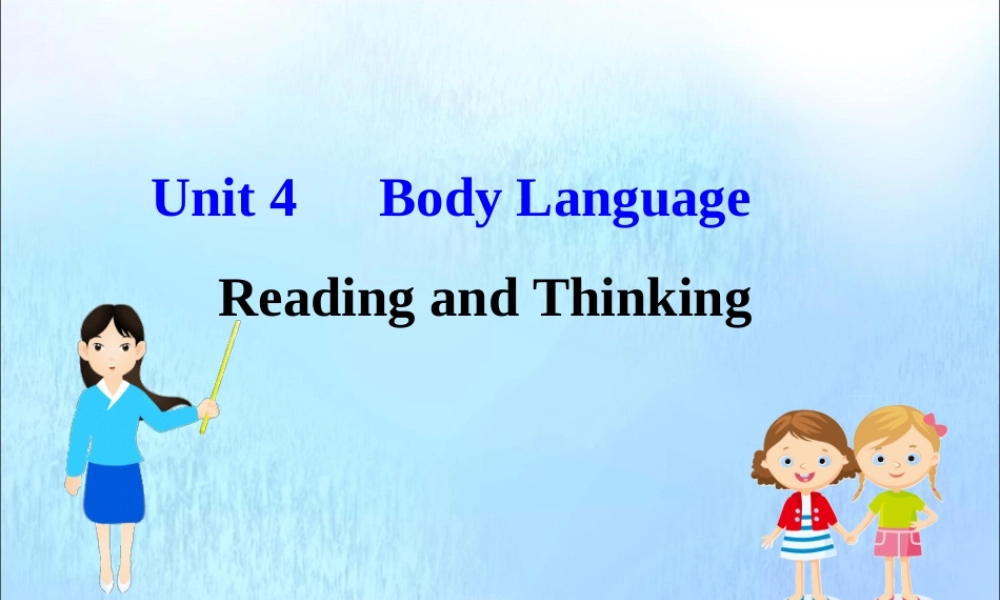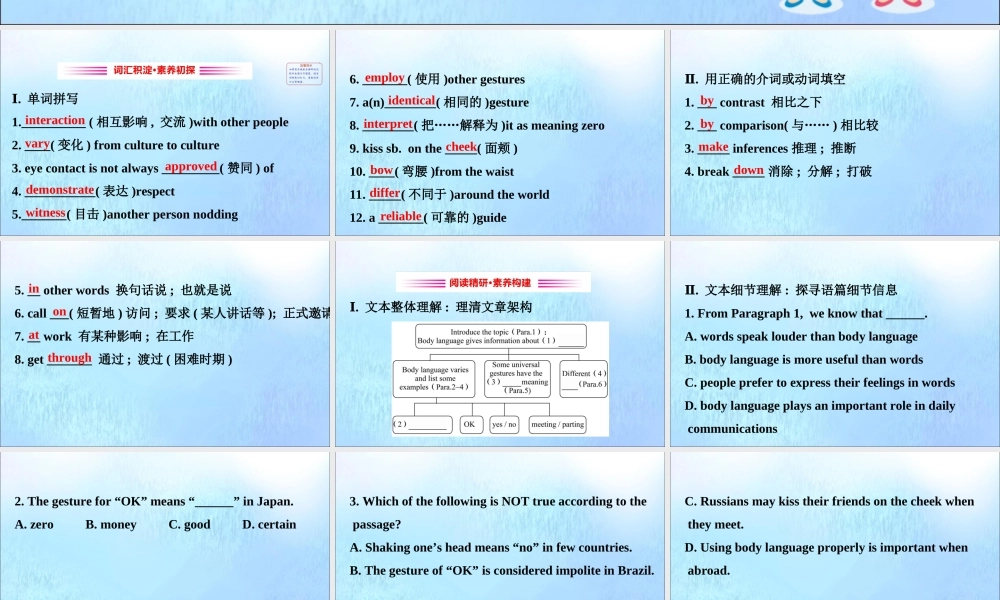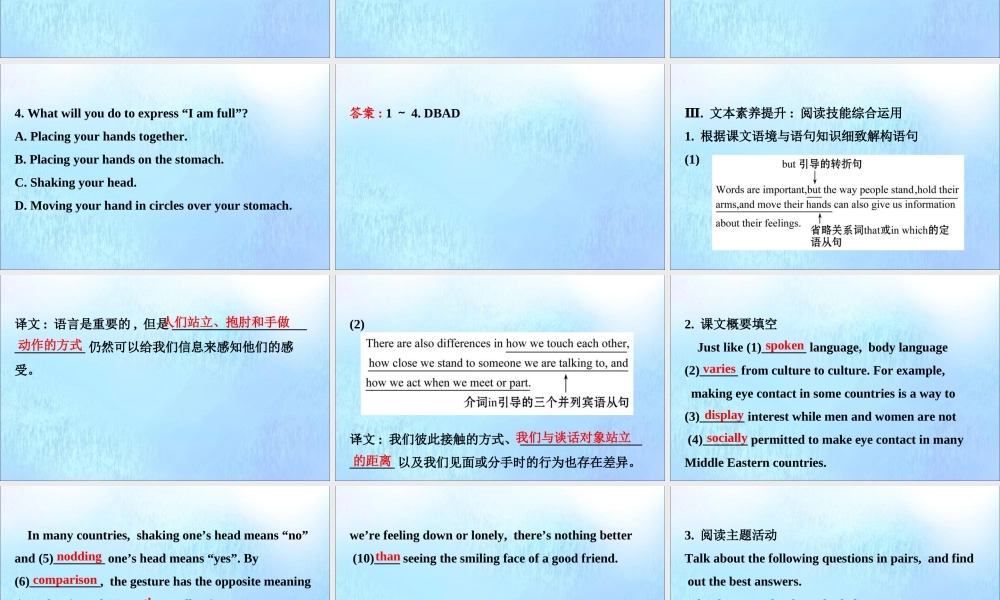Unit 4 Body Language Reading and ThinkingⅠ. 单词拼写1.__________ ( 相互影响 , 交流 )with other people2. ____( 变化 ) from culture to culture3. eye contact is not always _________( 赞同 ) of4. ___________( 表达 )respect5._______( 目击 )another person nodding interactionvaryapproveddemonstrate witness6. _______( 使用 )other gestures7. a(n)________( 相同的 )gesture8. ________( 把……解释为 )it as meaning zero9. kiss sb. on the _____( 面颊 )10. ____( 弯腰 )from the waist 11. _____( 不同于 )around the world12. a _______( 可靠的 )guideemploy identicalinterpretcheekbowdifferreliableⅡ. 用正确的介词或动词填空1. ___ contrast 相比之下2. ___ comparison( 与…… ) 相比较3. _____ inferences 推理 ; 推断4. break _____ 消除 ; 分解 ; 打破bybymakedown5. __ other words 换句话说 ; 也就是说6. call ___( 短暂地 ) 访问 ; 要求 ( 某人讲话等 ); 正式邀请7. __ work 有某种影响 ; 在工作8. get _______ 通过 ; 渡过 ( 困难时期 )inonatthroughⅠ. 文本整体理解 : 理清文章架构Ⅱ. 文本细节理解 : 探寻语篇细节信息1. From Paragraph 1, we know that ______. A. words speak louder than body languageB. body language is more useful than wordsC. people prefer to express their feelings in wordsD. body language plays an important role in daily communications2. The gesture for “OK” means “______” in Japan. A. zero B. money C. good D. certain3. Which of the following is NOT true according to the passage? A. Shaking one’s head means “no” in few countries. B. The gesture of “OK” is considered impolite in Brazil. C. Russians may kiss their friends on the cheek when they meet. D. Using body language properly is important when abroad. 4. What will you do to express “I am full”? A. Placing your hands together. B. Placing your hands on the stomach. C. Shaki...



